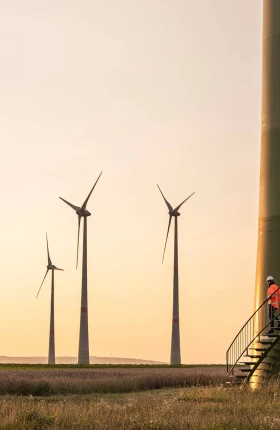When business or community leaders seek funding for a project aimed at mitigating climate change, many investors will jump on it. But if the project is aimed at adapting to climate change or coping with climate disasters, it’s likely to be a different story. That’s largely because of the perception that such projects won’t offer a sufficient return—that they aren’t “bankable.”
With mitigation projects, the return on investment is often clear. Consider a proposal to build a renewable power plant. Producing energy that can be sold under a contract to a power utility, a government, or directly to customers can be a lucrative business. This is especially true if you’re replacing an old, inefficient plant. Decarbonization projects are also considered bankable when policies such as carbon taxation are in place.
This often isn’t the case for adaptation and resilience projects, where the returns on investment are less clear. Take, for instance, regenerative agriculture—a land-management practice that works in accordance with ecological systems. It helps rebuild topsoil by sequestering carbon dioxide from the atmosphere, avoiding vast tracks of monocultivated land and other problems of highly industrialized agricultural production. Undertaking such a project can seem costly. But it will lead to significant benefits to farmers and consumers by improving crop yields. Another example is the construction of a sea wall, which over the long run could save a city from being submerged. But financiers—even if they’re from a development finance institution—often don’t see how they can generate financial returns from such an investment.
We’re working to change this mindset. We believe adaptation and resilience projects constitute public goods that yield socioeconomic returns, benefitting both the economy and communities.
Currently, most baseline projections of GDP and other economic KPIs don’t take climate risks into account. Nor do companies’ financial projections. These baselines must be revisited. Climate disasters are no longer one-time, black swan events, nor are the impacts limited to a few unlucky populations. The Intergovernmental Panel on Climate Change estimates that 3.3 billion people are today living in countries that are highly vulnerable to climate impacts.
In the face of climate risk, we need to consider return on investment in a new light.
To encourage the financing of adaptation and resilience projects, we need to consider return on investment in a different light. Countries and companies need to evolve their economic and financial planning to systematically account for climate risk, similar to the way inflation and other risks are usually accounted for.
We can use AI and economic models to quantify the direct and indirect cost of inaction—to quantify the gap between the economic and financial outcomes that are likely under certain climate hazard scenarios and the economic and financial damage that could be avoided with the right interventions. We also need to quantify the wider social and natural impacts. Once that gap becomes clear, the return on financing adaptation and resilience projects becomes visible. The cost of implementation is nothing compared to the cost of inaction.
A project we’re working on in Lagos State, Nigeria, illustrates this approach. Lagos is one of the world’s most vulnerable cities. It’s at a low elevation, is densely populated, and suffers from many socioeconomic challenges as well as insufficient infrastructure. Rising sea levels and intense heat will be devastating to Lagos. Our model estimated that investing around $1.6 billion in infrastructure such as sea walls would prevent approximately $4.5 billion in economic damage. But a mixed portfolio of solutions—including building a desalination plant, recharging aquifers, relocating only the most vulnerable families, and flood-proofing buildings, among other interventions—would cost about $10 billion while preventing $30 billion in economic damages.
Armed with this kind of data and rationale, it’s much easier to define adaptation and resilience projects in a way that is credible to donors and financers. But it requires the right kind of analytical tools—and a better understanding of return on investment—to do so.







